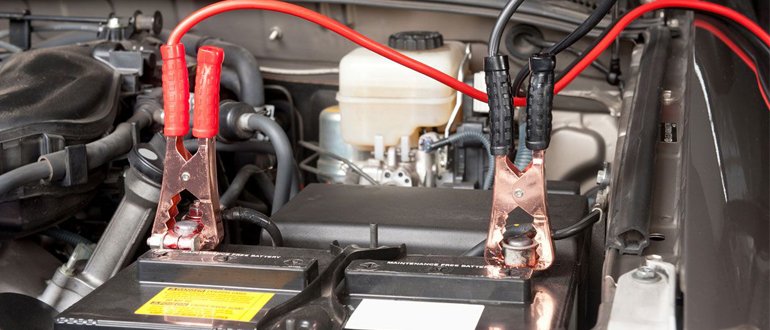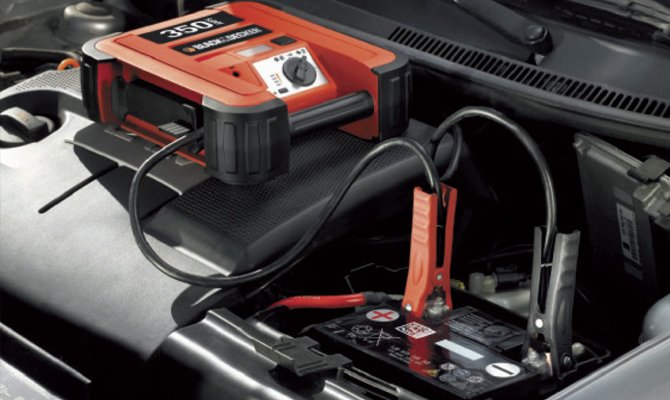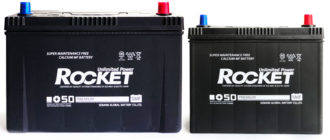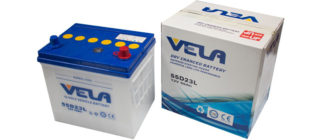During the operation of the car, the battery is charged from the generator of the car. Charge current depends on:
- car battery charge level;
- type of generator voltage regulator;
- internal resistance of the battery, the degree of wear.
Directly, the driver cannot adjust the value; it is set at the stage of designing the generators and the relay of the controller.
Many car owners during long periods of parking or in the winter remove batteries from the car and store it in a warm garage or at home. During storage, the battery must not be allowed to discharge. Processes occur in a discharged battery sulfationthat lead to irreversible phenomena and its failure.
You must charge the battery regularly. This operation is required if the battery has been discharged during parking. Charging comes from the charger. In this case, it is necessary to set the current correctly.
Content
Why is it important to set the charge current correctly?
The charging current of the battery is a defining characteristic of the charge mode. In the generalized case, it should be considered precisely the concept of a “mode” of charge. In cars with internal combustion engines, several types of batteries are used:
- Acid (antimony, calcium, etc.);
- AGM batteries;
- Gel.
Each of these types suggests its own charging mode. For example, AGM battery fully charged in three stages:
- Main charge.
- Recharge.
- Final charge and conservation.
Regular battery is charged in one-stage mode. Deviation of the value from the standard values can lead to:
- reduce the effectiveness of the operation;
- loss of consumer characteristics;
- destruction of the battery.
How to calculate battery charge current
The estimated value of the charge current for acid batteries and in the first stage of the charge of gel and AGM batteries is approximately 10% of the characteristic of the battery capacity in ampere-hours. For example, if the battery capacity is 50 Ampere-hour, the nominal value is set at approximately 5 Amperes. If a deep-seated battery is taken for the charge, it is easy to calculate that at the same time it will fully recharge in 10 hours.
In extreme cases, it is allowed to increase the rated current, but not more than 5%. For example, if you need to fully charge a dead battery with a capacity of 100 ampere-hours per night, that is, 8 hours, it can be charged 100/8 = 12.5 amperes. Please note that the charger must be designed for this value.
During the process of charging the battery, the current will not remain constant. Usually at the first stage it is small, then with increasing density of the electrolyte it grows. After a charge to a level of 80% of capacity and above it decreases. Such a process is observed on simple chargers with a constant voltage charge.
Pulse chargers can be programmed to the desired charge mode. For desulfation, that is, restoration, of the plates, the regime is used when a part of the period is charged with a small current, then a large discharge.
Such a shake may restore the battery after improper use.
What will happen if you charge with a large current
Some motorists, in order to save time, charge the battery with a large current. Such an error can occur if you turn on the battery, set it to a certain value and stop monitoring the process, for example, leave the garage.As the density of the electrolyte increases, the current may increase excessively.
First of all, a large current can lead to the failure of the charger up to its ignition. Therefore, it is impossible to install starter-charging devices on easily flammable tables, stools.
At high current, the electrolyte temperature rises. It can boil. If the electrolyte begins to boil, water first evaporates. Concentrated acid remains in the jars, which destroys the plates. Thus, you can completely lose the battery.
The most terrible consequence of high current is the explosion of a battery can. Not one battery man received chemical burns as a result of a battery explosion. Therefore, it is necessary to immediately stop the operation if the electrolyte is boiling!
What will happen if charged with less current
A small charge proportionally increases the recovery time of the battery capacity. In some cases, it is not possible to charge with the necessary current. Most non-professional chargers are made with a maximum characteristic of 5 Amps. A battery for 100 ampere hours will be charged for 20 hours, that is, a day.
The fact that the charge in small quantities does not harm the battery is encouraging. On the contrary, there is an ancient method of battery recovery. First, it is charged for a very long time with a small value of 1 Ampere, then it is quickly discharged with an extra current.
How to measure the current when charging on the battery
A multimeter is usually used to measure amperage in amateur conditions. You can use the simplest Chinese device. It must be checked that it has a 10 ampere measurement mode.
In order to check the current strength, the probes of the multimeter include one on a common wire, the other on a separate 10 Amp jack. The multimeter mode switch is set to I 10 A constant (=).
Attention! Do not make the main mistake of motorists: DO NOT include probes in parallel with the battery in measurement mode I. The device will instantly fail.
The multimeter probes are installed in the gap (sequentially) of the charging circuit. You can not bother about the polarity of the multimeter probes (but the charger must be turned ON STRICTLY at the polarities indicated on the terminals). The LCD panel displays the charge current. If the probes are switched in reverse polarity, the instrument will have a minus sign in front of the value.
By the way, there are cases when motorists charged a fully discharged battery in reverse polarity, then tried to start the car from a reversed battery.









